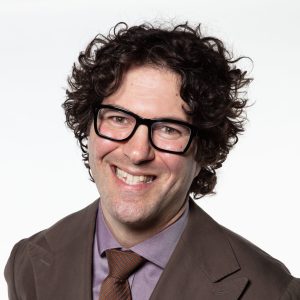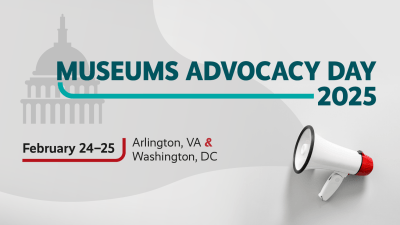
If you know me and follow this series, you probably know about my obsession with purpose and its power to make good organizations great. When I come across a book or article on purpose, I have to read it, as I did with Sandy Skees’s 2023 book, Purposeful Brands: How Purpose and Sustainability Drive Brand Value and Positive Change, after spotting it in my local library. Reading her book, which discusses purpose for brands and organizations generally, I began to wonder what she would have to say about the museum field in particular, so I reached out. [Be sure to check out the Museum Glossary’s purpose definition.] The following excerpt comes from my interview with Sandy, where we talked about purpose and why it matters, mission, shared responsibilities to the commons, and more. Enjoy.
Adam Rozan: Can you please introduce yourself and share what you do for work?
Sandy Skees: My name is Sandy Skees; I’m the Executive Vice President of Purpose + Impact Global Lead for Porter Novelli and the author of Purposeful Brands.
AR: How did writing a book about purpose come about?
Skip over related stories to continue reading articleSS: My main reason for writing this book is that we are running out of time. Today’s challenges are even more significant than we thought, and with the expectations of the next generation for businesses and brands, the need for the book becomes much more straightforward. If we can stop fighting over the words [purpose, mission, vision, and values] and accept a framework from which we can all work, that would accelerate the needed changes in our organizations and society.
AR: Having a mission or mission statement is standard practice for any organization, as is having a vision or values statement. However, most cultural organizations seemingly don’t have a clear or defined purpose statement. This is true for museums, where only a few have embraced the concept of purpose, like Space Center Houston, which is very much alone in this space.
Why is this?
SS: I think that museums and other organizations that have a non-commercial business model believe that their very existence speaks for itself and expresses a purpose. But I believe that for museums—or other organizations that collect, preserve, and nurture collections—a deeper dive is warranted. An answer to the bigger question…why? To ensure access to beauty? To deepen humanity’s understanding of the seemingly unknowable?
An answer to the museum’s theory of change or initial founding impetus are good places to unearth a purpose that, once articulated, draws others in shared pursuit.
AR: What’s your personal definition of purpose?
SS: Purpose is the greater good that an organization takes responsibility for creating in the world – using the full resources of the organization.
When I talk to brands about their business, I ask them to look at it this way – start with the thing you make, how you make it, what you do with it when it’s done. All those things can be aligned to some greater good, in service to the commons. The commons are those shared resources which we rely on but none of us own—cultural cohesion is the commons, a functioning society is a part of the commons. So are fresh air, clean water, all those things that we can’t live without. So, your purpose is your commitment to being responsible for something bigger that your organization. But it’s using the entity itself, everything—the thing, you, the product, the offering, the service—as the mechanism for creating that change. Not “we do this thing, we’ve got some money left over, we’ll write some philanthropic checks, or our employees will go out and, you know, do a beach cleanup.” Those are all just activities with little weight behind them, but if you can say we exist to improve the world, what’s the better thing you’re trying to create?
AR: We’re talking about purpose, but we should also shed some light on mission.
What is a mission or mission statement, and how is it different from a purpose statement?
SS: Many museums—and companies—conflate purpose and mission, which I believe are quite different and distinct. A mission is the function that the offering or product serves. A mission helps employees focus on the tasks at hand and encourages them to find innovative ways of increasing productivity with an eye to achieving organizational goals. Mission statements describe how organizations will serve customers. Included in mission statements are usually details about what market the museum is in, the approach it will take, and a future seen for the museum.
When differentiating from purpose, mission statements are specific to the organization itself and the way it will deliver value to customers. Purpose statements describe how companies will use their focus and assets to benefit the commons, the greater good.
AR: So, at a museum, it can’t just be that we collect and show objects. The question then becomes, to what end, for what goal?
SS: It’s the “why” that you’re talking about! It could be enough to say that humanity craves beauty, so maybe the purpose is preserving access to beauty or something because that’s part of the human impulse. When you frame it that way, it will change how you show up in your community, what you do, say, etc.
AR: Can you discuss the importance of language in articulating purpose?
SS: The language piece is so critical because it becomes like a beacon that people can follow. What is culture? What is engagement? What is impact? That might seem simple, but if you ask ten different people what culture is, you get ten different answers, but then we’re all not rowing in the same direction. So, a lot of that is getting down to basics and saying, okay, what do these words mean to us? We can move forward as an organization if we’re all clear on that.
AR: How do you ensure alignment with purpose across different levels and functions of an organization?
SS: It’s essential that leadership understands what’s happening on the front lines and can help the people there understand how what they’re doing daily ties back to the bigger picture. I think that’s often where there’s a break in communication and understanding. Part of it is just helping people see the bigger picture and also realizing that that doesn’t have to happen all the time, so if you give people enough information about what you’re trying to accomplish and why, then they can make good decisions on the front lines without having to ask you all the time.
AR: How do you keep purpose alive and relevant within an organization?
SS: Part of it is just continuing to talk about it. I think it’s also essential to give people visibility into what’s happening in the organization, so we have a couple of different meetings that we have set up that are just about giving people visibility into what’s happening but also giving them visibility into how what’s happening ties back to the bigger picture. And then I think it’s also just permitting people to push back if they feel like something’s not aligned with the purpose and then also rewarding people when they do things that are aligned with the purpose and recognizing that publicly.
AR: What role does purpose play in decision-making within an organization?
SS: Purpose plays a massive role in decision-making, because if you’re making decisions that are not aligned with your purpose, you’re just wasting your time. Having that clarity of purpose makes decision-making so much easier because you can say, okay, does this thing that we’re thinking about doing or currently doing serve our purpose? And if the answer is no? Then it would be best if you stopped or did not do it. If the answer is yes, then you should keep doing it or start doing it, so it simplifies decision-making.
AR: When I talk about museum purpose, I always ask, what if your museum was gone tomorrow? What would the world and, more specifically, your community lose? This question isn’t always hypothetical, and it requires you to get real and specific about your organization’s connection to its community.
SS: I agree. If you can’t articulate your purpose, your organization won’t likely be here in fifty years. In today’s world, where people’s attention spans are shorter, and their engagement with institutions is selective, relevancy and alignment matters.








Comments